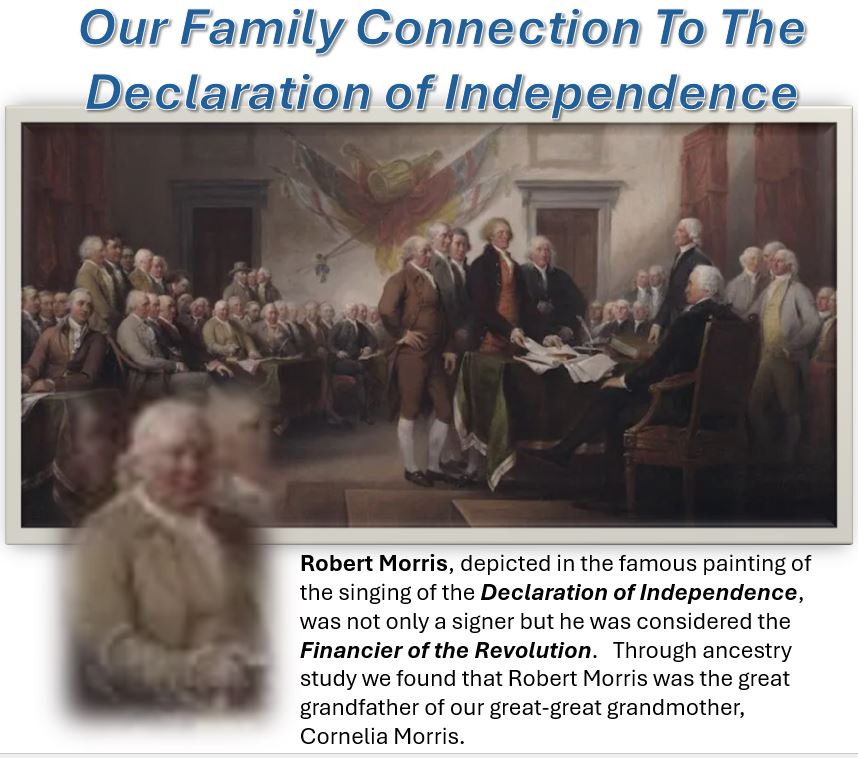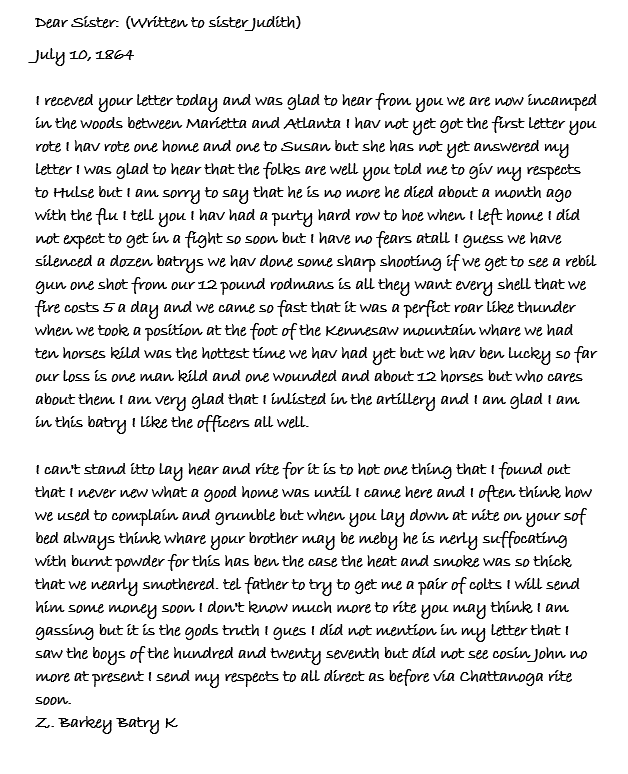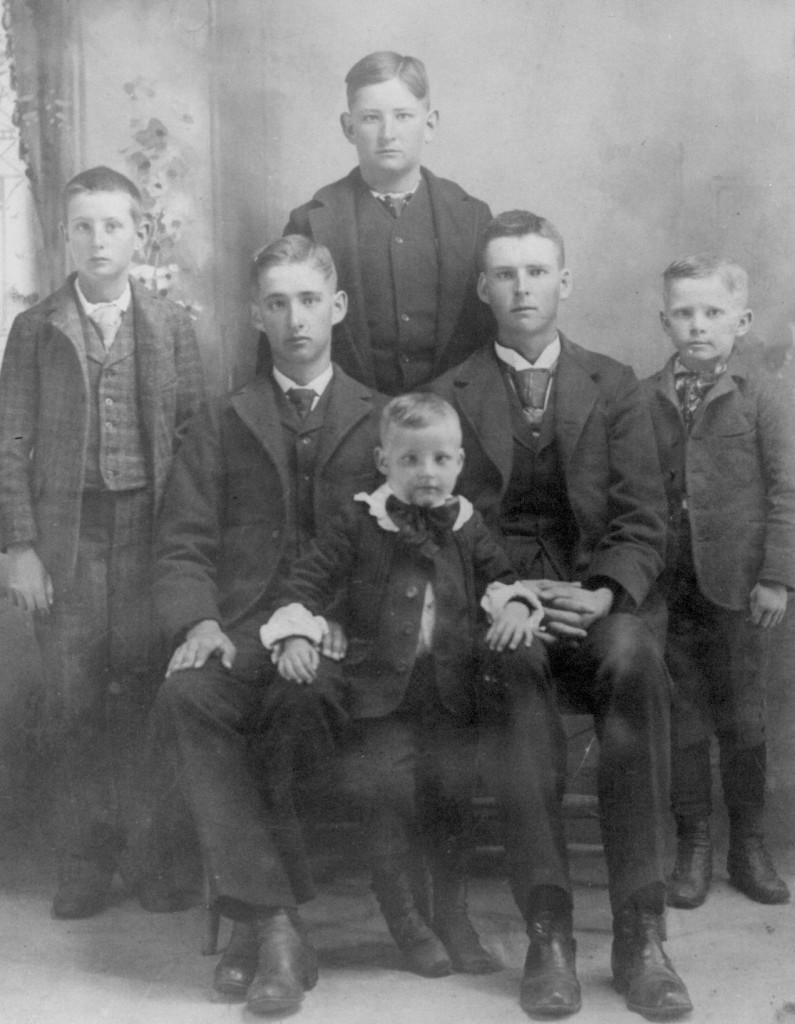Uncategorized
Robert Morris and the American Revolution

Highlights of the life of Robert Morris:
- Signed the Declaration of Independence – 1776
- Signed the Articles of Confederation – 1781
- Signed the U.S. Constitution – 1787
- Orphaned at age 14
- Partner in a trading and shipping company at age 20
- Wealthiest person in the American colonies in 1776
- Represented Pennsylvania in the Continental Congress
- Established international trade with most European countries
- Personally funded Captain John Paul Jones naval operation
- Personally funded Washington’s action to cross the Delaware River and capture the British outpost in Trenton New Jersey
- Arranged funding and supplies for the American Revolutionary War 1776 – 1783
- Served as the Superintendent of Finance for Congress 1781 – 1783
- Established the first bank in the United States chartered by the Commonwealth of Pennsylvania
- Established the Bank of North America
- Purchased the home for use of President George Washington when the U.S. Capitol was in Philadelphia 1790 – 1800
- Recommended that President Washington appoint Alexander Hamilton as the first Secretary of the Treasury after Washington asked Morris to serve.
- Engaged in land speculation in the west and at one time owned most of the land in the west half of the State of New York
- Land speculation failures and other financial problems caused Robert Morris to be sent to Debtors Prison 1798 – 1801
- Died in virtual poverty – 1806
- Two universities are named in his honor:
- Robert Morris University – Pittsburg
- Robert Morris University – Illinois
Not everything we know about our ancestor, Robert Morris, is positive. He and an early business partner engaged for a short time in the slave trade. He also owned slaves. He was continually criticized by the Lee brothers of Virginia for the way he managed financing and secured supplies for the revolutionary war. Morris conducted this activity by leading a secret committee that was authorized by the Continental Congress. The committee’s actions were later audited and Morris’s actions were found to be above reproach. It was not uncommon for Robert Morris to use is own credit and financial assets to repay public debts encountered during the revolution. Robert Morris has been largely omitted from the popular stories of our American Founding Fathers. However, he was, at the time of the Revolutionary war, considered to be the “Financier of the Revolution.” During the war there was no revenue source to fund the purchase of arms, uniforms, food, supplies and pay for the army. It is commonly acknowledged that the war would likely have been lost without the creative financing endeavors of Robert Morris.

Captain Joseph Wadsworth hides the Connecticut Colony Charter

This story tells how determined our New England ancestors in Connecticut were to protect a tradition of democracy that they had secured under the Colonial Charter they had secured under King Charles II in 1662. That charter provided for the election of citizens to provide for stable and secure government throughout their colony. Twenty-five years later, in the succession of British royalty in 1687, King James II decided he needed to take direct control over the New England Colonies by joining them into a single dominion and revoking their existing charters. To enforce this takeover, he sent an armed group to the capitol of each New England colony to collect and destroy their charters.
On October 31, 1687 the British Officers marched into Hartford to meet with the leaders of Connecticut in the upstairs room of Sanford’s Tavern. Their goal was to collect and destroy the parchment charter. It was nighttime and the meeting was tumultuous. Suddenly the candles were all extinguished and there was a commotion in the darkness. When the candles were relit, the charter was gone. During the darkness someone in the room passed the parchment out a window to Captain James Wadsworth who ran immediately to hide the charter in the hollow of an ancient giant oak tree across the river. The British were never able to find the charter and destroy it. The Connecticut Charter remained hidden in the “Charter Oak Tree” until 1689 when the New England Colonies achieved the overthrow of the English Dominion.
This story is of special personal interest because our family are direct descendants of Captain Joseph Wadsworth. Our grandfather was Francis Clay Barkey, and our grandmother was Belle Stanley Barkey. Our ancestor John Stanley was a founder of Hartford Connecticut. Our Stanley ancestor, Samuel Stanley married Joanne Goodman in 1754. Joanne Goodman was a granddaughter of Captain Joseph Wadsworth.

Driving On Our Cousin’s Road
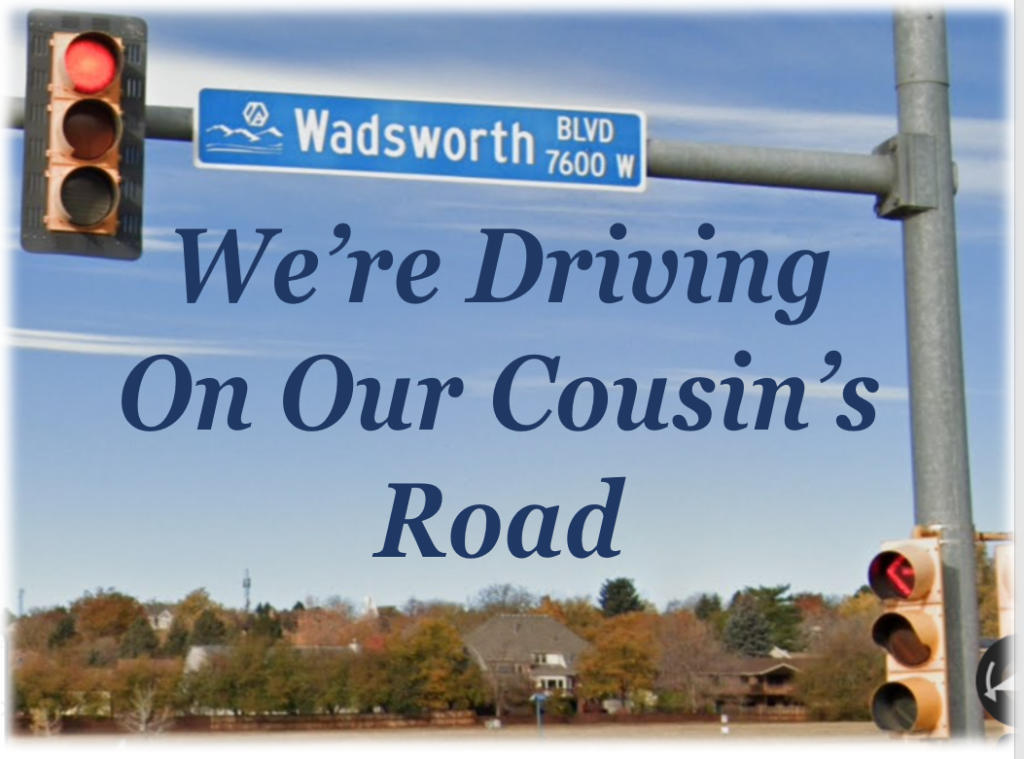
Wadsworth Boulevard is one of the busiest roads spanning the west Denver suburbs of Arvada, Lakewood north to Broomfield and south to Littleton. The road was named in honor of Benjamin Franklin Wadsworth, the first Postmaster of Arvada who migrated to Colorado around the time of the 1859 gold rush and after a short stint around Empire, settled with his wife near Ralston Point, now Historic Old Town Arvada.

Wadsworth purchased a land claim in 1863 and by 1869 had moved his family into this log cabin.
Wadsworth developed a plat for a town of nine square blocks on his 160 acres, and his wife Mary Ann named the new town Arvada after her brother-in-law, Hiram Arvada Haskins.
The Wadsworth’s had immigrated from New York and their family roots extended from Hartford, Connecticut. They were some of the earliest puritan immigrants to New England. Benjamin Franklin Wadsworth was a descendant of William Wadsworth, who immigrated to Massachusetts in 1632 from Northampton England.
Scanning a list of surnames in our Barkey family history you will see that the list included 23 people named Wadsworth and there he is…William Wadsworth, born in Northampton England in 1594 and buried in Hartford, Connecticut in 1675. Our grandparents, Francis Clay Barkey and Belle Stanley Barkey had moved to Colorado from Nebraska in 1917. The Stanley family came from Hartford, Connecticut where our ancestor Captain John Stanley was a founder. In Hartford, one of Belle Stanley’s great, great grandfathers, Samuel Stanley, married Joanna Goodman in 1754. Joanna was a daughter of Joanna Wadsworth, the great granddaughter of William Wadsworth.
So now we have a new appreciation of our cousin’s road.
…who more than self their country loved…
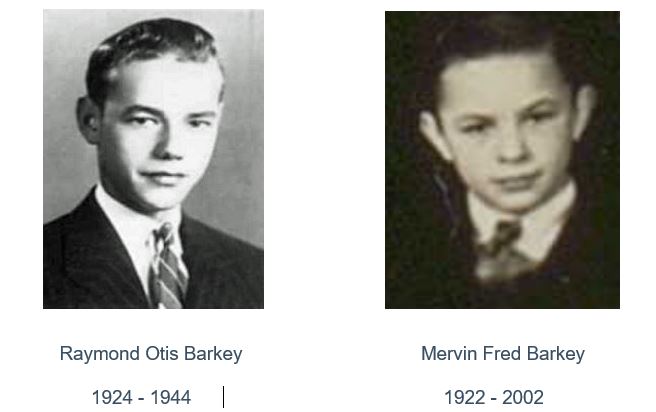
Two Barkey brothers from rural northwest Indiana and their family paid a great price for the freedom we enjoy in America. The brothers both attended Lowell High School near Roselawn, Indiana where they were active in sports and music. Mervin enlisted in the Army Air Corps where he served as a top gunner on a B-24 Liberator. His younger brother Ray enlisted on March 31, 1943 and became part of the 101st Airborne Division, 506th Parachute Infantry Regiment.
As the allied forces pushed across western Europe in 1944, both brothers were in grave danger. Ray was injured on June 6th but went back into action on June 18th. On October 6th in a drop over western Europe he was critically wounded and died in an army hospital in Holland the next day. On February 24, 1944 his older brother Mervin had been shot on a bombing mission over Germany. After parachuting safely he was taken prisoner by German forces. Mervin was a veteran of 16 previous missions over enemy territory and had been in England since October, 1943. He was a German prisoner of war until his prison was liberated in July 1945.
Ray was laid to rest in the Netherlands American Cemetery at Margraten, Netherlands. Both Ray and Mervin were recipients of the Purple Heart and many other service awards. Ray’s grave has been adopted for care and honor by Ricardo Barkey of the Netherlands.
A special thanks is due to Ricardo Barkey for his kindness in caring for Ray’s grave and for Ricardo making an inquiry to Dick Barkey of Colorado about a possible relation to Ray. It appears the only connection is that we share the same family name. Ray’s grandfather immigrated to America from Prussia in northeast Germany in 1870, whereas Dick Barkey’s ancestors came to Pennsylvania from Switzerland in 1717. Though not related, we are nonetheless grateful for the gifts these Barkey brothers made to the freedom we treasure.
Honoring our Parents

Ruth Eleanor King married Cline Ziegler Barkey on September 3, 1937
at Grace Methodist Church in Indianapolis, Indiana.
Ruth and Cline Barkey
Our parents, Ruth and Cline Barkey, parents of David, Richard, Stanley and Paul Barkey, met in Chicago at Moody Bible Institute in 1934. Ruth King was from Indianapolis and had attended the Indiana Central University (now the University of Indianapolis) for one year before attending Moody. When they met she had graduated Moody and had taken a job at the school as a secretary. Cline was from rural northeast Colorado and had attended Colorado A&M College (now Colorado State University) for a year after high school. Before beginning his studies in Chicago he was working on the family farm near Haxtun, Colorado when his uncle, Rev. Edward Barkey suggested he consider attending Moody.
Dad arrived in Chicago in January 1932. It was a stark change from small town rural Colorado to the big city. The Moody Bible Institute (click to learn about Moody) program was three years of study and Dad and Mom met on a blind date in the summer of 1934 just before his final year.
Dad was ordained a Baptist minister and over the next four decades they served in churches in California, Illinois, Colorado, Minnesota, Nebraska, South Dakota and North Dakota. Dad earned his B.A. degree from Greenville College during the six years he served as pastor of Cottage Hills Baptist Church near Alton, Illinois. While serving in churches our parents worked hard to provide for our family. Mom was a superior typist and organizer so she worked in law offices, a TB Sanitorium, and for the U.S. Department of Agriculture. While they were serving in North Dakota, Mom took on a job to help fund their trip to Argentina where Dave and his wife Marge were missionaries. Here’s the long list of jobs that Dad did to put food on the table: butcher, milk truck driver, corn picker, insurance sales, farm labor, real estate sales, mail carrier, short order cook, rescue mission assistant, roofer, custodian, construction, hospital chaplain. Our family never had much but we always had a home and food and we always felt loved and cared for.
Over the years I remember hearing a lot about the school our parents attended in Chicago. Stanley attended Moody and he also met his wife Stephany in Chicago where she was a nursing student. The school was established in the 1870’s by Dwight L. Moody, a widely known preacher in the late 1800’s. Somewhat like Billy Graham, D.L. Moody held crusades all over the U.S. and Europe. His events often included the song “Great is Thy Faithfulness”(click to listen) that became a theme at the school. It is a song of gratitude and encouragement that often plays in my head. The song is a great reflection on our parents.
- Read Cline Barkey’s narrative at: http://www.barkey-us.org/wordpress/FamilyTree/616.htm
- Read about Ruth Eleanor King and King family ancestry at: Ancestors of Ruth Eleanor King (barkey-us.org)
A Special Memorial Day Remembrance
Kennesaw Mountain is one of the most tranquil and beautiful places in Georgia. But June 27th it became a raging hell of exploding artillery shells, smoke, and dead and injured solders and horses. In terms of casualties, the Union Army lost about 3,000 to 1,000 confederates. Despite the losses at Kennesaw Mountain, Sherman’s troupes were still able to work their way toward Atlanta by flanking the Confederates.
Zeigler survived this harrowing day. It’s not hard to picture him handling horses with a heavy artillery piece, trudging through the strange south country, caring for his horses, moving equipment into position, taking cover, not sure about the next meal or the next day, sleeping on the ground and hearing the cries for help from the wounded during the night.
Zeigler mustered out of the Union Army in July 15, 1865…. Thankfully to become our ancestor…..father of Frank Barkey … grandfather of Cline Barkey … We can take pride of his service and the union of American States that he helped to preserve.
Here is a letter he wrote home to his sister Judith soon after the Kennesaw Mounting Battle:
For more information about Zeigler Barkey and his Civil War Service, click on this link:
http://www.barkey-us.org/wordpress/FamilyTree/785.htm
Here are Zeigler’s Boys including Frank Barkey, far left. (c. 1890)
Zeigler died February 4, 1914 and is buried at the Highlands Cemetery, northwest of Courtland Nebraska.

